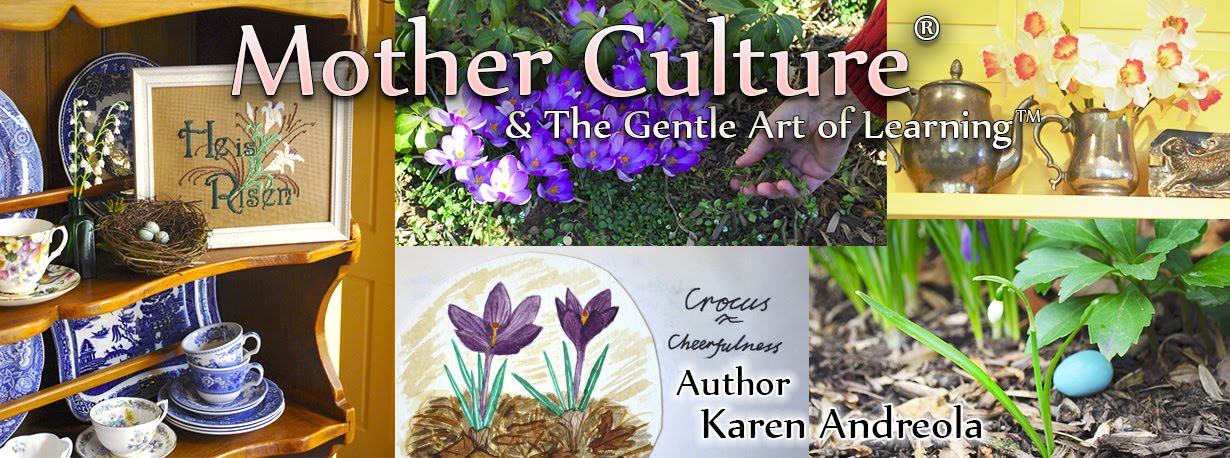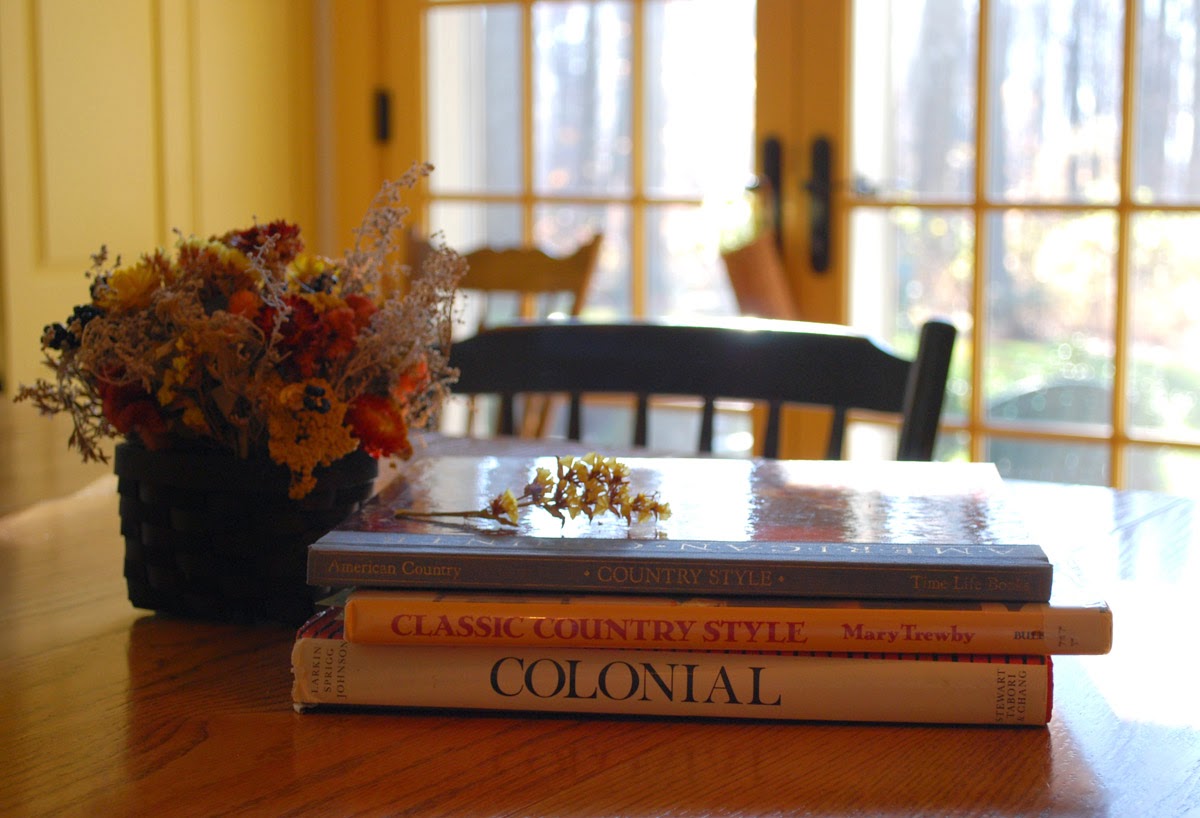A Screen-free Quiet Time
I’ve come to the end of my Sunday school series:
“There’s No Place Like Home”. I enjoyed teaching it and would like to continue
come spring. I especially appreciated how the older moms in the class shared hints
and experiences with the younger moms.
In the last class I talked about the importance of
fitting into the rhythm of the day, a screen-free quiet time. One mother in the
class is a home educator. Another mom plans to home educate. Therefore, I kept
my topics general to be edifying to all. But you must know. I can’t help my
bias. My secret opinion (which is no secret now) is that it is the home teacher
- who works diligently with her children all day – and who by no surprise runs
out of steam - who could glean most gratifyingly from my recommendation.
To the home teacher solitude is golden.
Part of home teaching is learning and living
abundantly and joyously alongside our children. A mother can do many things
with her children about her. But there is also a private aspect to the
religious and creative life that thrives in moments of solitude.
This November I’ve had a quantity of quiet time. I’ve
stayed close to home. Puttering about the house I’ve been patiently trying to wean
off a medicine I started for chronic pain. Anyway, by contrast, how vividly I
remember those early days of motherhood. By an orderly arrangement of hours I squeezed
in a little quiet time - for myself and my children. It was good for all of us.
A break is good for body and soul. Being alone gives refreshment to
togetherness. It seems to be something necessary for creativity and reflection.
"Shakespeare, Leonardo Da Vinci, Benjamin Franklin and Abraham Lincoln never saw a movie, heard a radio or looked at television. They had loneliness and knew what to do with it. They were not afraid of being lonely because they knew that was when the creative mood in them would work.” Carl Sandburg (poet)
What is my recommendation? Pick a time in the day
that works for you. Be faithful to it. After some weeks it will feel quite
normal.
I remember following a string of morning of lessons
with a late lunch, chores, and a picture book read aloud to settle the youngest
child (above the age of napping). Then, with every child in his or her quiet
time spot - set up with a screen-free occupation of their choosing - I’d turn
the dial on the portable kitchen timer to set it to ten minutes (graduating to
20 minutes thereabouts). I’d place the timer in the upstairs landing outside the
bedrooms. And I’d retreat.
Leaving the timer to its ticking I would sit in a
sunny window overlooking the back garden. I’d bow my head to read, pray, journal,
write a paper letter, or just lay flat on the bed for a stretch and watch the
dust in a sunray float in the air and settle on the nightstand. If I could
forget about dusting for the time being, I’d feel my shoulders relax, my
forehead soften, and my eyes want to close.
When the timer reached the rickety ringing of its
real bell, the children knew quiet time was over. We would return to the active
parts of our day with renewed vigor – and perhaps even a renewed attitude.
Later in the afternoon, padded by thick sweaters we
would file out the back door. We needed the fresh air and the removal of four
walls. The children would head for rope swing, bicycle, or wagon. Or, we would
take an autumn nature walk together shuffling through the fallen leaves.
A wise mother will, if possible, proved opportunities for her children to be alone so that each one will learn how to fall back upon himself for counsel and entertainment. Beautiful Girlhood, chapter 23 “The Quiet Hour”
Explanation of Photographs

This month, on a yellow-leaf day, I assembled the pattern pieces I cut out for an apron for myself. I will continue its progress when my Christmas presents are completed. I decided to lengthen the hem and omit the ruffle. I will cut out a plain square pocket to applique the pineapple I cross-stitched. A pineapple can usually be found somewhere in the kitchen.
Second-guessing the green paint color I chose for
the parlor I took some decorating books off the bookshelf. I guess you could
say that I am “in between” computers since my old computer no longer supports
Pinterest. Therefore, I am glad I kept several decorating books on hand for these bouts of indecision.
Several years ago I stitched this strutting roaster
(or is it a turkey?). Anyway, I liked its message and am passing it on to one
of my married daughters. It could be displayed for a variety of holidays.
The nesting dolls are waiting for my grandchildren on
Thanksgiving Day.
In a quiet time I opened Drawn From New England – a
biography of the children’s book illustrator, Tasha Tudor, written by her
daughter Bethany in 1979. Lost for some years my copy was recently found in my
daughter’s house. I was glad to see it again. Today I do not have the same startling
enchantment I once had of it. In the mid-nineties I was still in the throes of nest-building
and wrote a review of it for an issue of Parents’ Review. Oh, my. That was nearly
20 years ago. And yet, although my interest is subdued I can still appreciate Bethany
Tudor’s affectionate writing.
She marveled at how her mother turned every
household chore into a domestic 19th century art. This must have
been quite a feat in the years just after WW II when the young family moved
into a 17-room ancient New Hampshire farmhouse without electricity, modern
appliances, indoor plumbing and central heating. The hours of Tasha Tudor’s day
were spent waking up early to milk a cow, attending to her garden, baking bread
in a black-bellied wood stove, washing buckets of clothes by hand and sewing much
of their own clothing.
For her four children and herself she balanced
manual labor with make-believe. And Tasha Tudor made much of birthdays and holidays
with creative homemade efforts. The family’s lifestyle and fanciful seasonal
celebrations became a model for the water-color illustrations in the children’s
books for which she is best known. Some of the most vivid memories Bethany
Tudor has of her mother are related to her art. Practically speaking, book
royalties paid the bills.
Tasha Tudor created a beautiful old-fashioned life
for herself and her family. The Christian mother will create her own culture of
family traditions while remembering to live in the reality of the Kingdom of
God.
Is a quiet time retreat in your schedule?
Comments are welcome,
Karen Andreola










